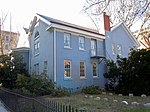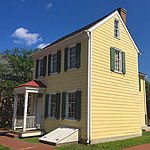First Presbyterian Church (Trenton, New Jersey)
19th-century Presbyterian church buildings in the United StatesChurches completed in 1839Churches in Trenton, New JerseyChurches on the National Register of Historic Places in New JerseyNational Register of Historic Places in Trenton, New Jersey ... and 3 more
New Jersey Register of Historic PlacesPresbyterian churches in New JerseyStone churches in New Jersey

First Presbyterian Church is a historic church located at 120 East State Street in Trenton, Mercer County, New Jersey, United States. The church's first congregation got together in 1712 and their first church was built in 1726. The church building and churchyard cemetery were added to the National Register of Historic Places for their significance in architecture, politics, religion, and social history on September 9, 2005.
Excerpt from the Wikipedia article First Presbyterian Church (Trenton, New Jersey) (License: CC BY-SA 3.0, Authors, Images).First Presbyterian Church (Trenton, New Jersey)
East State Street, Trenton
Geographical coordinates (GPS) Address External links Nearby Places Show on map
Geographical coordinates (GPS)
| Latitude | Longitude |
|---|---|
| N 40.220444444444 ° | E -74.763305555556 ° |
Address
First Presbyterian Church
East State Street 120
08619 Trenton
New Jersey, United States
Open on Google Maps







